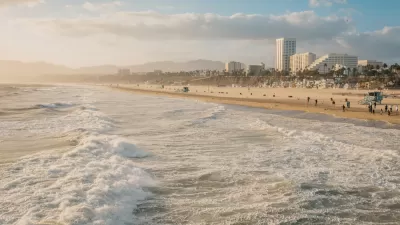Any prospect for the green initiatives to produce desired results requires more than just aggressive reduction targets, according to The Economist. It comes down to scope and suitability, the two factors that vary greatly from city to city.
"[F]or climate-change plans to work, the actions you take have to be local, tailored to the particular needs of each city," explains Missy Stults in the article. "One particular strength of urban, as opposed to national or even state climate-change policy, particularly in a country as vast as America, is that cities are different; what works in one may not in another."
"Portland's plan, for instance, calls for 90% of its citizens to be able to walk or bicycle 'to meet all basic, daily non-work needs' by 2030: a laudable and achievable goal there, but far more difficult in sprawling cities such as Los Angeles or Houston. New York's PlaNYC pays more attention to wetlands and coastal issues than CCAP does, because New York has more coastline and waterways than Chicago."
FULL STORY: Greening the concrete jungle

Alabama: Trump Terminates Settlements for Black Communities Harmed By Raw Sewage
Trump deemed the landmark civil rights agreement “illegal DEI and environmental justice policy.”

Study: Maui’s Plan to Convert Vacation Rentals to Long-Term Housing Could Cause Nearly $1 Billion Economic Loss
The plan would reduce visitor accommodation by 25% resulting in 1,900 jobs lost.

Planetizen Federal Action Tracker
A weekly monitor of how Trump’s orders and actions are impacting planners and planning in America.

Waymo Gets Permission to Map SF’s Market Street
If allowed to operate on the traffic-restricted street, Waymo’s autonomous taxis would have a leg up over ride-hailing competitors — and counter the city’s efforts to grow bike and pedestrian on the thoroughfare.

Parklet Symposium Highlights the Success of Shared Spaces
Parklets got a boost during the Covid-19 pandemic, when the concept was translated to outdoor dining programs that offered restaurants a lifeline during the shutdown.

Federal Homelessness Agency Places Entire Staff on Leave
The U.S. Interagency Council on Homelessness is the only federal agency dedicated to preventing and ending homelessness.
Urban Design for Planners 1: Software Tools
This six-course series explores essential urban design concepts using open source software and equips planners with the tools they need to participate fully in the urban design process.
Planning for Universal Design
Learn the tools for implementing Universal Design in planning regulations.
Caltrans
Smith Gee Studio
Institute for Housing and Urban Development Studies (IHS)
City of Grandview
Harvard GSD Executive Education
Toledo-Lucas County Plan Commissions
Salt Lake City
NYU Wagner Graduate School of Public Service



























